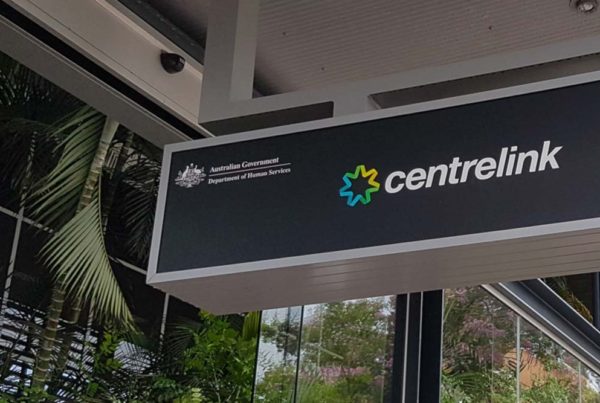
Image: zsoolt
In an industry that has become accustomed to change management hyperbole, it is hard to find new words to describe the growing pace of change in the coming decade. It is clear these coming changes will be even more significant than anything we have yet experienced.
Don’t pin hopes any on particular technologies
It has always been difficult to make long range technology predictions. While it is relatively easy to predict growth rates and the uptake of known technologies, there are significant challenges in taking account of the growing amount of disruptive change. These are the technologies that come out of left field and significantly change the ground rules of the IT market. Twenty-five years ago, most predictions completely missed the profound impact of the internet.
Fifteen years ago, most predictions completely missed the impact of social and mobile apps. Today, these technologies would feature prominently in most IT strategies.
The big mistake made in formulating any predictions is that we sometimes consider each technology in isolation of other technologies and in isolation of other factors in the wider community.
Today, disruption is likely to take a much more significant place in assessing future market directions. Even the workplace itself is set for significant change. In January this year, the World Economic Forum published its report: “Future of Jobs – Employment, Skills and Workforce Strategy for the Fourth Industrial Revolution”.
The report found that the changing nature of work (including flexible work) will be by far the most significant factor impacting global employment strategies in world economies up to the year 2025. This single factor will have far more impact than others that are currently featuring prominently in the media.
These include climate change, geopolitical volatility, ageing populations and rapid urbanization. It is therefore a reasonable bet that we should start preparing for disruptive changes on the horizon for existing workplace technologies.
Customer/citizen service is also set for significant disruption. We are already seeing the beginnings of these changes through existing digital initiatives. The combination of generational change, ubiquitous personal technologies and widespread network connectivity, have combined to create a powerful brew for disrupting customer markets.
For example, Ovum research shows that mobile apps are expected to become a $79 billion industry by 2020. It would be unreasonable to expect that customers will continue to be content with the existing software offerings.
Don’t take technological optimism too far
While disruption will clearly be an increasing driver of change in the coming ten years, it is equally clear that not everything we see in science fiction will necessarily come true. There is quite a lot of danger in taking technological optimism too far. A useful case study is the current consumer wearables market. Most of the successful companies, such as Fitbit, did not even exist ten years ago.
Indeed, wearables barely featured as a serious consideration except in development labs and in science fiction. The key to success for wearables companies has been in correctly understanding the consumptive capacity of their target market. Today, consumers have quickly taken to fitness bands because the value proposition is pretty much self-evident. Meanwhile, virtual reality glasses remain a niche market in spite of industry hype.
In the coming five to ten years glasses and advanced wearables, such as smart clothing, should be very much on the planning checklist. On the ten year horizon, predictive reality wearable devices are very likely.
The clear lesson from the growth of the wearables market is that it is not sufficient to just consider the availability of technology, but to also understand the readiness of the consumer market at a particular point in time. In a disruptive world there will be plenty of good ideas waiting for the right market conditions before they are able to take off.
What should CIOs do to prepare for disruption in the coming 10 years?
As the pace of change picks up, the business case for asset ownership becomes increasingly difficult to justify. Today’s shiny new product quickly becomes tomorrow’s ageing legacy liability. Cloud and other Opex based services offer a much more flexible solution, and a superior method of future-proofing an organization’s internal IT capacity.
A similar case can be made regarding large internal IT staffing structures. The test of an organization’s ability to deal with disruptive change can be measured by the strength of its partner ecosystem, not by the size of its internal IT headcount.
Kevin Noonan is Ovum’s global lead analyst for the government sector.
ABOUT OVUM
Ovum is a leading global technology research and advisory firm. Through its 180 analysts worldwide it offers expert analysis and strategic insight across the IT, telecoms, and media industries. Founded in 1985, Ovum has one of the most experienced analyst teams in the industry and is a respected source of guidance for technology business leaders, CIOs, vendors, service providers, and regulators looking for comprehensive, accurate, and insightful market data, research, and consulting.
With 23 offices across six continents, Ovum offers a truly global perspective on technology and media markets and provides thousands of clients with insight including workflow tools, forecasts, surveys, market assessments, technology audits, and opinion. In 2012, Ovum was jointly named Global Analyst Firm of the Year by the IIAR.
Ovum is a division of Informa plc, one of the leading business and academic publishing and event organisers globally, headquartered in London. Informa is quoted on the London Stock Exchange.
View Ovum Profile




